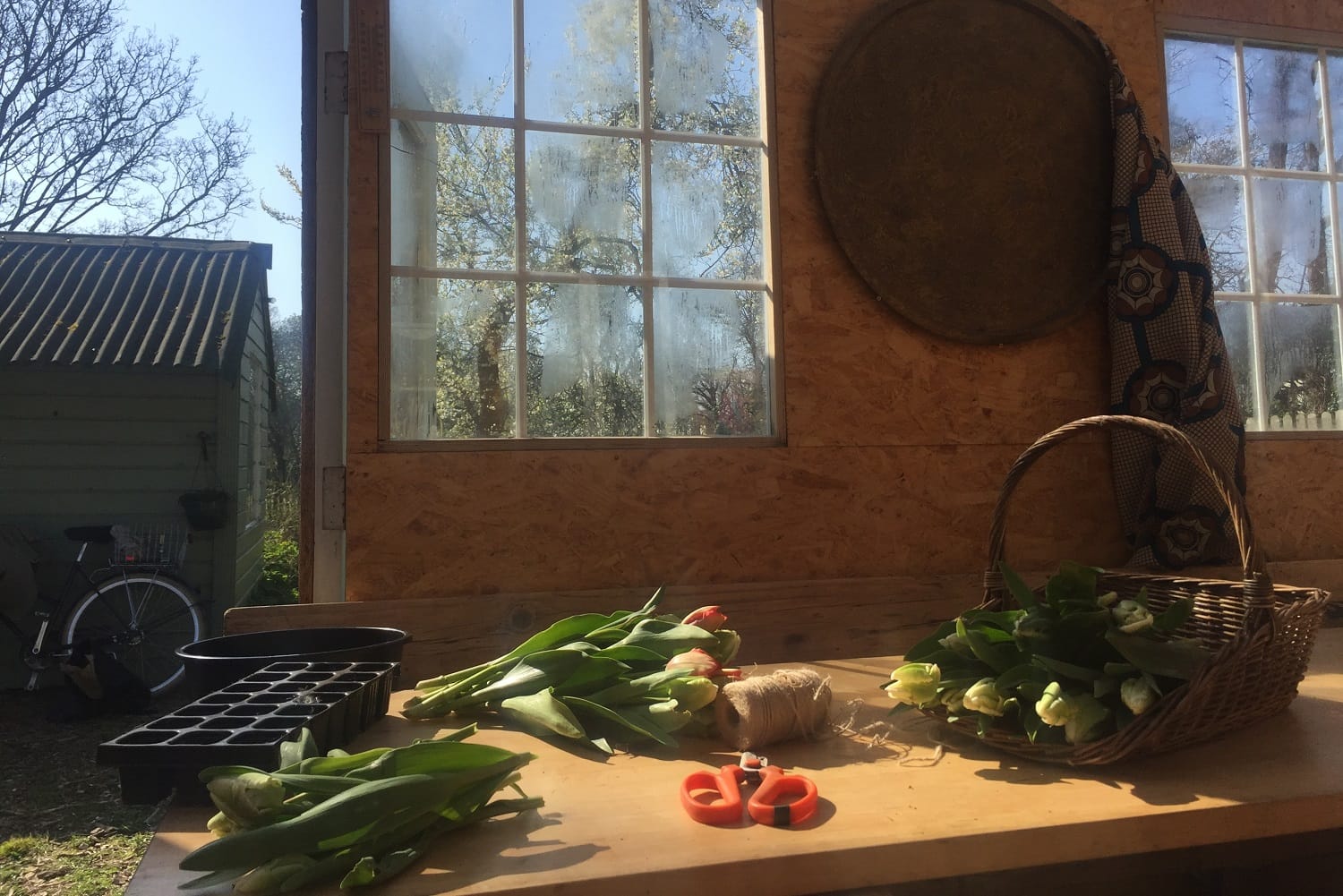As government support for sheltering Ukrainian refugees dwindles, finding somewhere to live means taking more risks
“I understand now how valuable it is to help each other. How important it is to have a roof over your head, to have community.”
Most of Ireland’s flowers are imported year round from Holland, says Mélie Desbrosse. “It doesn’t make sense to me that flowers have to take planes.”

At Elmhurst Cottage Farm in Glasnevin on Friday, florist Mélie Desbrosse kneels on the ground and pulls cutters out of her tote bag.
“This is the perfect one,” she says, singling out one tall Ronaldo tulip for the bouquet she has planned. Its tip is burgundy, the rest still hugged tight by its green sepals.
The petals will emerge in a few days so it needs to be picked now, she says. “This one is ready to go. It will have about a five-day life.”
There are rushed moments in flower growing, certain times during the day you need to cut flowers, she says. “Some like in the morning, others in the evening.”
“I’ll go get a few more guys,” says Desbrosse, as she reaches around the plants, carefully selecting buds about to bloom.
Desbrosse has been growing flowers in a 30-square-metre plot that she rents in the garden for three years, after leaving a corporate job in Paris.
This year is the first that she plans to sell buckets of flowers to florists across Dublin rather than bouquets to customers, expanding her mission to spread flowers that have been grown seasonally and sustainably.
Most of Ireland’s flowers are imported year round from Holland even though more could be grown much closer to home, she says. “It doesn’t make sense to me that flowers have to take planes.”
She’s not entirely sure how her plan is going to go, she says.
“We are importing everything, even heather, which grows abundantly in Howth and the Connemara,” says Desbrosse. “We often import it from Holland.”
You can order eucalyptus from Holland that’s been grown in Ireland, she says. “It can go back and forth.”
“Everything could be grown here,” she says. “I’d love to have a bigger allotment and sell my flowers only to florists from a small-scale urban farm.”
On her farm in Prosperous in Co. Kildare, Amelia Raben has been growing and selling flowers sustainably since 2016, she says.
She’s part of Flower Farmers of Ireland, a collection of growers who have come together to advocate for the buying of locally grown flowers.
Some members of the group are trying to grow a little more every year to meet the high demand from florists, says Raben. “I just don’t think it’s sustainable to keep shipping flowers from Holland.”
But the challenge, says Wayne Richardson, another florist, is that “consumers expect flowers year-round”.
Richardson sources 90 percent of his flowers for Bath Lane Blooms in Phibsboro from Holland, and the rest from Kenya, Ecuador or a few seasonal growers in Ireland.
Habits may have to change. If customers in Ireland bought their flowers in a seasonal and sustainable way, there would be no red roses for Valentine’s Day, says Raben.
Roses grown in Ireland would mostly only be available during the summer. “Florists won’t be happy with that,” says Raben.

Desbrosse says florists need to educate their customers. “By offering options they didn’t have in mind.” Customers need to ask if florists have flowers grown in Ireland. “Or dried flowers.”
Raben says her dried flower wreaths and bouquets do well over winter. Customers at the moment like more gardeny, natural styles, she says.
Native flowers, such as cowslip, buttercups, ragged robin and dandelions, would make up a drastically different bouquet to most available at the moment, says Raben.
Raben delivers fresh bouquets to customers in Kildare and Dublin, when the flowers are ready.
But she can’t always guarantee what exactly will be in the bouquet, she says. “When you grow sustainably, it’s hard to predict what the season will be like.”
It would be better to tell florists she can provide a certain colour, rather than a type of flower, she says.
Desbrosse’s plan is to email florists weekly, letting them know what she has.
“I’m open to all sources of flowers,” says Richardson. “I’m conscious of the carbon footprint and I know we don’t have a lot of control over that because it’s the demand and supply of our fresh products.”
Customers look for colours more than specific flowers, says Richardson. “In spring, the yellows, the whites and pinks. Summer is always an intense colour, because it’s bright and sunny.”
“And then winter, a lot of people go for a classic green and white,” he says.
He doesn’t make plans and he asks the customer what colours they like. “I’d rather work ad hoc. It’s like I’m painting a canvas.”
In the garden’s nursery in Glasnevin, Desbrosse is keeping track of the seeds she’s germinating for summer.
Cosmos, delphinium, cock’s comb, love-in-a-mist, trachynium and coneflowers, among others.
“Some take longer than others,” she says, as she holds a small green stem between her fingertips.